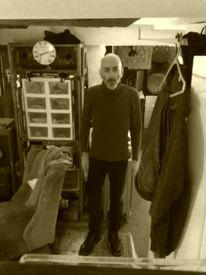Optimal stretching?

Bailey_432
Posts: 55 Member
Hey all 
Doesn't take long stalking my profile to see that, yes, I am a cheerleader Now, because I'm a flyer (and because I do cheer in general), it's essential that I stretch often to be really flexible to get my heel stretch, bow and arrow, scorpion etc (if you don't know what these look like - Google them!).
Now, because I'm a flyer (and because I do cheer in general), it's essential that I stretch often to be really flexible to get my heel stretch, bow and arrow, scorpion etc (if you don't know what these look like - Google them!).
I was wondering what the optimal way to stretch is to maximise flexibility and minimise injury?
Currently I *try* to stretch most days. I do a 5 minute warm up beforehand (jumping jacks, running on the spot etc), or I do it after my gym session so I'm already nice and warm. I do each of my stretches and hold them for 20-30 seconds each, although it would help loads to have a stretching partner on hand to push me further!!
How do you all stretch? Feel free to post any flexibility progress pictures or anything!
p.s. Link to a picture of a bow and arrow --> https://s-media-cache-ak0.pinimg.com/236x/9b/9a/22/9b9a22f8e90aa1eb86bfa11271d7b232.jpg
Doesn't take long stalking my profile to see that, yes, I am a cheerleader
I was wondering what the optimal way to stretch is to maximise flexibility and minimise injury?
Currently I *try* to stretch most days. I do a 5 minute warm up beforehand (jumping jacks, running on the spot etc), or I do it after my gym session so I'm already nice and warm. I do each of my stretches and hold them for 20-30 seconds each, although it would help loads to have a stretching partner on hand to push me further!!
How do you all stretch? Feel free to post any flexibility progress pictures or anything!
p.s. Link to a picture of a bow and arrow --> https://s-media-cache-ak0.pinimg.com/236x/9b/9a/22/9b9a22f8e90aa1eb86bfa11271d7b232.jpg
0
Replies
-
In addition to dynamic stretching, look into self-myofascial release.0
-
This may be helpful.
http://well.blogs.nytimes.com/?s=Dynamic+stretching0 -
I'm assuming you have pretty good mobility then based on your description. Before you Cheer / Compete, you can use Active-Isolation or Dynamic Stretching or a combination of the two. Post competition you should do some static stretching, but the holds need to be a minimum of 30-sec's; anything less is of little to no benefit. On days off do some SMR like Allan mentioned and just some regular static stretching for overly tight areas.
I'm not sure why you need a stretching partner. If you were doing some PNF stretching you would need a partner, BUT that partner needs to know what they're doing or they can hurt you.
Static Stretching
Static Stretching – Process of passively taking a muscle to the point of tension and holding the stretch for a minimum of 30 seconds.
By holding muscle in stretched position for prolonged period, Golgi Tendon organ is stimulated and produces inhibitory effect on muscle spindle(autogenic inhibition). This allows muscle to relax and provides for better elongation of the muscle. In addition, contracting the antagonistic musculature while holding the stretch can reciprocally inhibit the muscle being stretched, allowing it to relax and enhancing the stretch.
Static stretching should be used to decrease muscle spindle activity of a tight muscle before and after activity.
Active-Isolated Stretching
Active-Isolated Stretch – Process of using agonists and synergists to dynamically move the joint into a range of motion.
Increases motorneuron excitability, creating reciprocal inhibition of muscles being stretched. Active supine biceps femoris stretch is good example of active-isolated stretching. Quads extends the knee, this enhances the stretch in two ways. First, increases the length of biceps femoris, second contraction of the quadriceps causes reciprocal inhibition(decreased neural drive and muscle spindle excitation) of hamstring complex, which allows it to elongate.
Active-isolated stretches are suggested for preactivity warm-up(before sports competition or high-intensity exercise), as long as no postural distortions are present. 5-10 reps of each stretch are performed and held for 1-2 seconds each.
example:
https://youtu.be/ypJ0TAvUCNk
Dynamic Stretching
Dynamic Stretching – Uses force production and momentum to move the joint through the full available range of motion.
Uses the concept of reciprocal inhibition to improve soft tissue extensibility. One can perform one set of 10 reps using 3 ot 10 dynamic stretches. Hip swings, medicine ball rotations, and walking lunges are good examples of dynamic stretching.0
This discussion has been closed.
Categories
- All Categories
- 1.4M Health, Wellness and Goals
- 398.1K Introduce Yourself
- 44.7K Getting Started
- 261K Health and Weight Loss
- 176.4K Food and Nutrition
- 47.7K Recipes
- 233K Fitness and Exercise
- 462 Sleep, Mindfulness and Overall Wellness
- 6.5K Goal: Maintaining Weight
- 8.7K Goal: Gaining Weight and Body Building
- 153.5K Motivation and Support
- 8.4K Challenges
- 1.4K Debate Club
- 96.5K Chit-Chat
- 2.6K Fun and Games
- 4.8K MyFitnessPal Information
- 12 News and Announcements
- 21 MyFitnessPal Academy
- 1.5K Feature Suggestions and Ideas
- 3.2K MyFitnessPal Tech Support Questions


